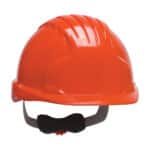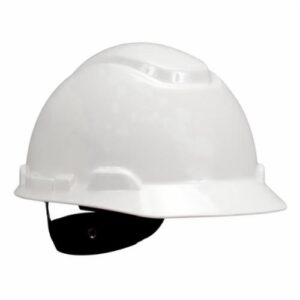According to the CDC, about 166 Americans die from a traumatic brain injury (TBI) each day. While anyone can experience a TBI, people who work in construction, industrial, and transportation settings are among those with a higher risk than average for suffering a traumatic brain injury on the job.
For that reason, OSHA mandates that hard hats be worn when working in areas where there is a potential for injury to the head from falling or flying objects, or electrical shock. But not all hard hats are designed to protect in the same way.
In this blog, we’ll explore the ratings and classes of hard hats available and discuss steps you can take to minimize the most common incidents that lead to traumatic brain injury on the job.
Type I vs. Type II Hard Hats
To achieve OSHA compliance, a hard hat must meet ANSI Z89.1 requirements or be proven to offer equivalent or better protection. Every OSHA-compliant hard hat available on the market today is either a Type I or Type II.
Type I hard hats offer protection to the top of the head only. They solely protect workers from objects that come from above or falls that impact the top of the head. These are the hard hats most typically used in the United States. One Type I hard hat that is gaining in popularity in the U.S. is the climbing helmet. It features a slimmer design than traditional Type I hard hats and a neck strap that prevents it from falling off. It also provides some additional protection for the sides and back of the head.
Type II hard hats protect the front, back, top and sides of the head. In addition to protecting wearers from top impact, these hard hats are intended to provide protection from off-center impact. Type II helmets are more common in European countries.
Electrical Classes of Hard Hats
Both types of hard hats are offered in a variety of electrical classes to help wearers reduce exposure to electrical shock. All hard hats are classified as either Class E (Electrical), Class G (General), or Class C (Conductive) classes.

Class E Hard Hats
Class E hard hats are designed to withstand up to 20,000 volts of electricity, making them ideal for environments where exposure to high voltage conductors poses a risk. It’s important to note that while Class E hard hats provide this level of protection to the user’s head, it does nothing to protect the rest of their body. Additional protective equipment and good judgement should be used as well. These hard hats are commonly worn by utility workers who work primarily in high voltage environments.
Class G Hard Hats

Class G hard hats are designed to protect wearers’ heads from low voltage conductors. They offer dielectric protection up to 2,200 volts. A Class G hard hat is common for workers who require a certain level of dielectric protection, but don’t spend a significant amount of their working day in high voltage environments. Class G hard hats were formerly known as Class A. They are the most commonly worn class of hard hat on the market today.
Class C Hard Hats
Class C hard hats offer no protection from electrical shock. These hard hats are designed to exclusively provide protection from impact blows. They are sometimes vented to provide breathability, comfort, and ventilation.
Protection Prior to Impact
While we tend to think of falling objects posing the greatest potential risks to employees’ heads, the most common incident that leads to brain injury in the workplace is falls. In addition to head protection, it’s important that employers exercise necessary safety measures like a fall protection rescue plan to ensure their team is properly protected.
It’s also important to think about ways to prevent traumatic brain injury due to falls in situations and environments where the threat of head damage seems less obvious. Spills and objects on the floor or ground can pose a fall risk. It’s important that everyone on your team do what they can to minimize the risk of falls by quickly eliminating hazards that could cause them.
Head Protection from Agilix Solutions
Finally, it’s important to note that hard hats need to be changed out every five years. Every hard hat has the date of manufacture listed on it, typically inside the front brim. The center number is the year it was manufactured, and the month will be noted by the numbers 1 through 12, in the circular pattern around the outside. 3M has also added a UV indicator to hard hats to make it even easier to recognize expired equipment. When the red label turns white, it’s time to replace the hard hat.
No matter your environment or needs, Agilix Solutions offers a variety of hard hat options to protect you and your team. Our safety specialists are well versed on the latest trends in head protection and can outfit your crew with the recommended solution to meet the demands of their work so they get home safely to their families. We also help you prioritize accessories like ear protection and face shields, depending upon the application. Reach out to your nearest branch location, or contact your Account Manager to learn more about our head protection offering.

